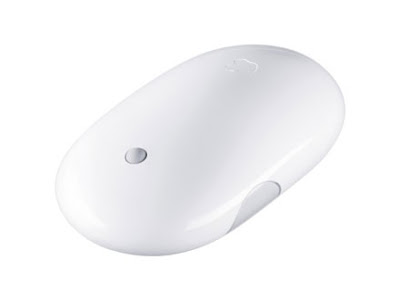
A1081 20 LCD Monitor
Apple's latest line of Cinema Displays (available in 20-inch, 23-inch, and 30-inch models) ushers in a renewed spirit of cross-platform cooperation. Thanks to a DVI connector on each and every Apple Cinema Display, PC users can now enjoy the fabulous design and stunning image quality that Apple aficionados have been luxuriating in since the iMac. The 23-inch Cinema HD Display LCD, in particular, is a looker. It's so lovely that we're willing to forgive its high price, limited adjustability, and lack of video inputs. In fact, hooking it up to a comparatively hideous Intel-based PC feels like such a crime that we're beginning to suspect an ulterior motive on Apple's part. How much was that
Apple Power Mac G5 again?
The Cinema HD Display's design leaves no detail overlooked. The sleek, 0.75-inch brushed-aluminum bezel is unblemished by anything so vulgar as a power button (it's tucked discreetly into the right-side edge of the display), and the aluminum neck and base form a simple, elegant L shape that's both completely stable and smooth enough on the bottom to turn and slide easily across your desktop. As you contemplate the Cinema Display's pristine beauty, you'll notice small, elegant details, such as the oval cable pass-through ringed with white plastic; the single white cord, which meets the glossy white power brick and splits into signal, power, USB, and FireWire cables; and the DVI connector, which also wears a tidy, white,
iPod-style suit.
The simple design, however, limits the adjustments you can make to the display panel. The neck height is fixed, so very tall users may have to set the Cinema Display on a riser (though it's almost painful to contemplate sullying the display's minimalist appearance with such a device). Also, unlike many large LCDs, such as the
Eizo FlexScan L885, the Cinema HD lacks the ability to pivot between Portrait and Landscape modes--a feature that would have made it even easier to view legal documents and Web pages. But while the display doesn't have a hinge or a lazy Susan for swiveling left and right, the slippery aluminum base lets you accomplish the same thing by sliding the monitor around. The panel also tilts back and forth about 20 degrees and 5 degrees, respectively; it's by far the smoothest, easiest tilt function we've ever seen in an LCD.
This generation of Cinema Displays marks Apple's return to a DVI connection (after years of using a proprietary ADC connection), making the Cinema HD Display PC compatible. Also, for the first time, the new Cinema Displays are compatible with VESA mounts, allowing you to attach the monitors to walls. But unlike many jumbo LCDs that incorporate home entertainment features such as picture-in-picture, a TV tuner, or composite and S-Video ports, the Cinema Display provides only two USB and two FireWire ports. We're willing to forgive these omissions because this LCD looks so pretty, but you should know that you can get these video extras in a 23-inch LCD (such as the
Planar PX212M or the
HP L2035) that costs several hundred dollars less than the Apple Cinema HD Display.
If you're using the Cinema Display with a Wintel machine, the only adjustment you can make to the display's image is to its brightness. The touch-sensitive brightness-control buttons are nestled out of sight along the right-side edge of the panel (below the power button) and blend perfectly with the white plastic end pieces. Luckily, the image quality is so good that the average Wintel user won't miss the ability to tweak contrast or individual color values. When we hooked it up to our
Power Mac G4, we were able to tweak the image using Apple's Display Calibrator Assistant. CNET Labs'
DisplayMate intensity and grayscale test screens revealed some obvious color-tracking errors; very light grays have a distinctly pinkish hue. Otherwise, we see very little hue shift in the Cinema HD Display's nicely linear progression from black to white. Our only other criticism is one that's common for LCDs: there's a fair amount of ghosting in high-contrast test screens; the display seems to have trouble switching from black to gray and back to black again without leaving reverse video trails. But overall, the display looks stunning: colors are vibrant and warm, details are crisply rendered, and video looks quite smooth and free of noise. (Video playback looks even better when you hook the display up to a G5.) Text also looks very sharp, with excellent contrast; the monitor does a great job reproducing pure, bright whites and dark blacks.
Given that the Cinema HD Display is significantly more expensive than competing LCDs, we're disappointed with its skimpy one-year warranty. The industry standard for LCDs is three years--appropriate for a piece of hardware that costs $2,000.




































